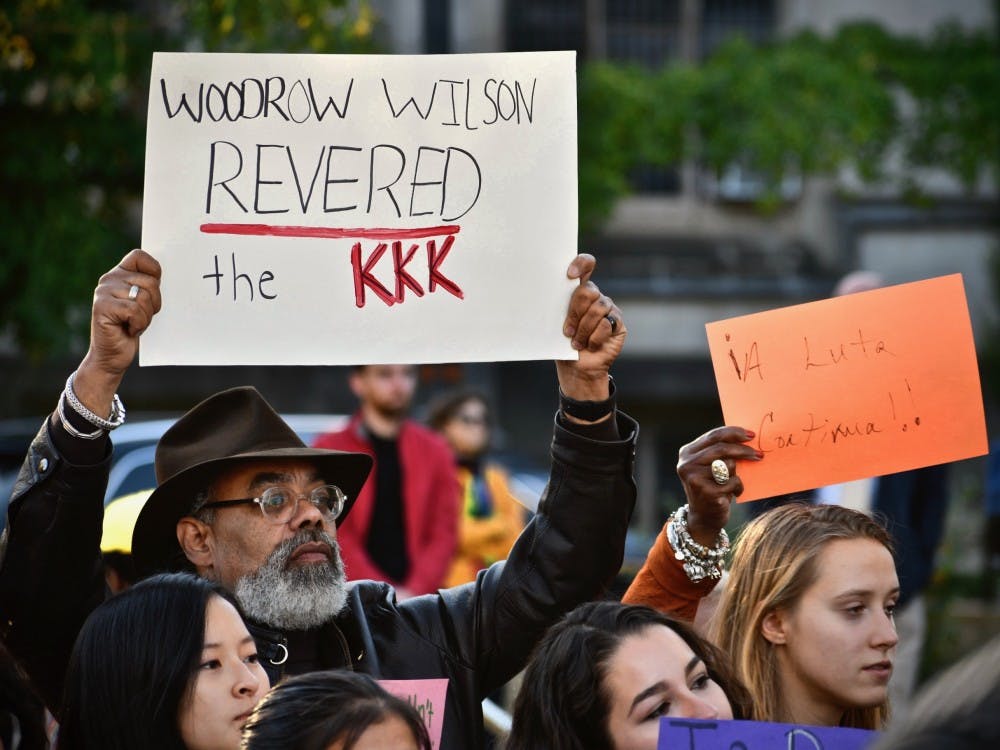Over 200 students, alumni, and faculty members gathered to protest at the dedication of the University’s new installation, “Double Sights,” which is aimed at recognizing the complicated legacy of Woodrow Wilson as both a prominent figure on campus and an avowed white supremacist.
The protest on Saturday followed remarks from Woodrow Wilson School Dean Cecilia Rouse and University President Christopher Eisgruber ’83. Previously, Walter Hood, the artist who designed the marker, and Michele Minter, Vice Provost for Institutional Equity and Diversity, had discussed the installation in McCosh 50.
During Rouse and Eisgruber’s speeches, delivered in front of “Double Sights,” demonstrators stood at the edge of the crowd, many holding signs denouncing Woodrow Wilson’s racism, the “Double Sights” installation, or both.
Afterward, the protestors came closer, gathering at the foot of the installation to listen to testimonials, speeches, and poetry from fellow students, faculty, and alumni, many of whom were on campus for Thrive, a three-day conference celebrating black alumni.
“I’m done talking about Woodrow Wilson. He’s a white supremacist,” Erica Dugué ’21 said to the crowd. “He never intended for me to be here. He never intended to represent most of us who are here today.”
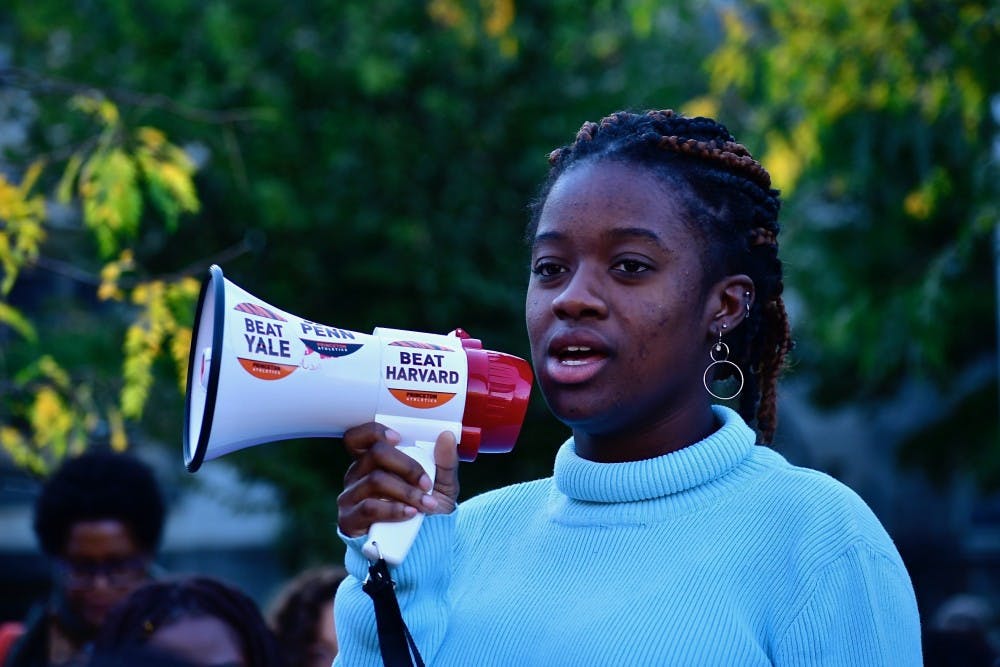
Erica Dugué ’21.
Photo Credit: Jon Ort / The Daily Princetonian
As president of the University, Wilson falsely asserted that no black student had ever attended the institution and actively prevented black applicants from being accepted, writing: “It is altogether inadvisable for a colored man to enter Princeton.”
Eliot Chen ’20, who spoke at the protest, criticized Eisgruber and Hood for leaving before the demonstration to attend a reception in Robertson Hall, where the exhibit “In the Nation’s Service? Woodrow Wilson Revisited” was on display. University spokesperson Ben Chang explained that the reception was the final event in a day full of scheduled conversations centered on the “Double Sights” installation and Woodrow Wilson’s legacy.

“The officials and others involved, including Walter Hood, his team, and Trustees, had always planned to go to this preexisting reception,” explained Chang. “It was not at all a spurning of the protest.”

Dannelle Gutarra Cordero, Lecturer in African American Studies, criticized the University’s lack of curricular diversity.
Photo Credit: Jon Ort / The Daily Princetonian
Present at the protest was Esther Maddox ’17, one of the members of the Black Justice League (BJL) who organized the November 2015 Nassau Hall sit-in demanding that the University rename the Woodrow Wilson School of Public and International Affairs, Wilson residential college, and “any other building named after him.” Maddox asserted that she believed the University’s efforts to reexamine Wilson’s legacy have overlooked the BJL’s activism.

“The University waits until we graduate and then pretends nothing happened. We projected ‘Birth of a Nation’ on the side of Robertson Hall,” she said, referencing the 1915 silent film that helped revitalize the Klu Klux Klan, and that Wilson famously screened at the White House.
“We put our whole academic careers on the line and now they act like they started the conversation. I’m just disgusted,” she added.
Larry Adams ’74, who was on campus attending Thrive, said that student graduation and constant turnover presents a unique challenge to student activism.
“It’s important that students move forward and that they continue to fight for justice,” he said. “We must establish a continuum and pass the baton from the previous generation.”
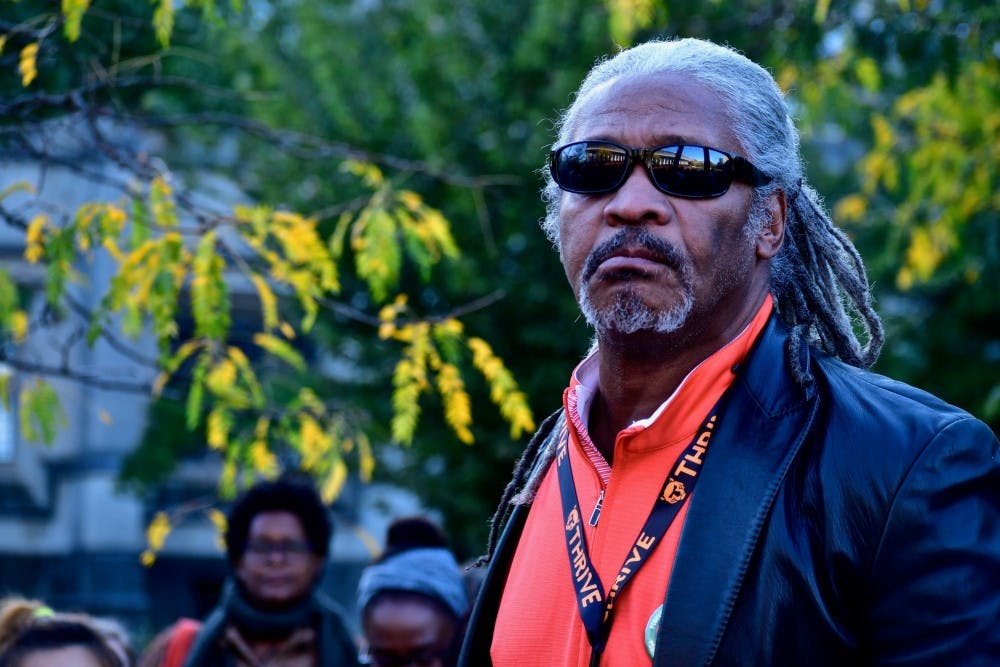
Larry Adams '74.
Photo Credit: Jon Ort / The Daily Princetonian
While speaking to the crowd, Adams denounced Wilson for the racist policies he implemented as President of the United States, saying, “He resegregated the federal government. He turned back the clock on segregation.”
Adams clarified that he was not at the demonstration to protest “Double Sights” itself.
“I’m not here protesting the marker. Some people may disagree, but to me it’s a marker, not a monument,” Adams said, turning and pointing at Robertson Hall, which houses the Woodrow Wilson School.
“That’s the monument.”
Chen also urged attendees to look at elements of Wilson’s legacy commonly regarded as positive, specifically his foreign policy, as an extension of his white supremacy, rather than any kind of redeeming accomplishment.
“He was a racist and a bigot,” Chen said. “It was not self-determination for all people that Woodrow Wilson believed in, but self-determination for white people, democracy for Western nations.”
Other demonstrators noted the number of public safety officers who were present, both during the unveiling ceremony and the protest that followed.
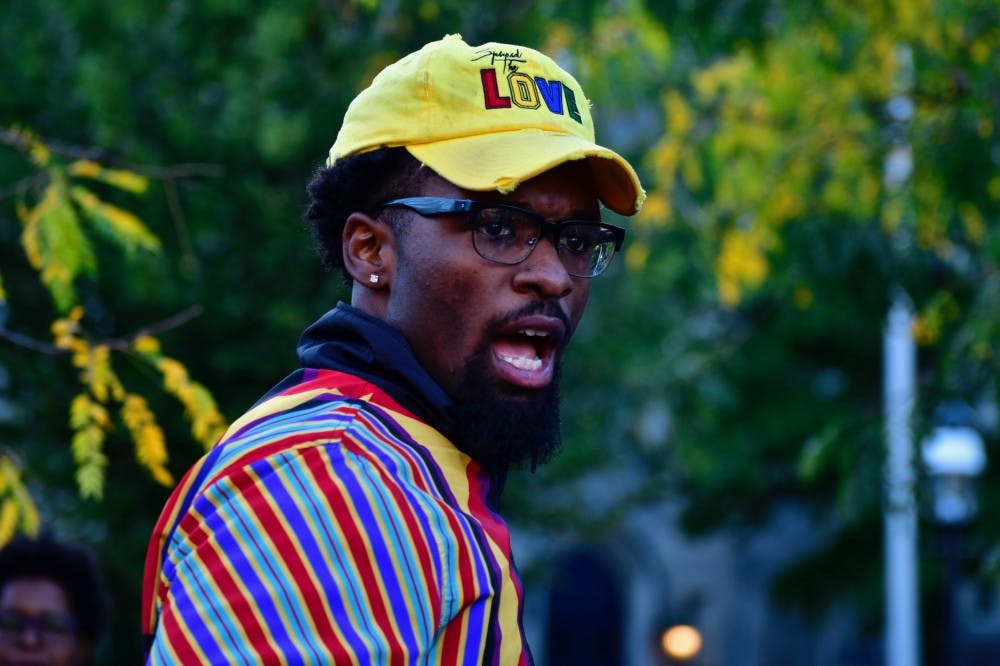
Malachi Byrd ’20.
Photo Credit: Jon Ort / The Daily Princetonian
“I don’t think Princeton is tolerant at all of angry protest,” said Malachi Byrd ’20, who added that while he understands the need for public safety, the officers at the demonstration made him uncomfortable.
“With issues of identity and race and things that we’re impassioned about, it seems like our protest gets treated as a threat, as opposed to something that should be addressed,” Byrd added. “The power of this space is that there was a time where I was just in the moment, and I was able to just be there with the people in this circle, but then as soon as I snapped out of it I saw them again.”
Chang noted that, while the exact number of officers who were at the demonstration is not available, the space was designed to welcome all who wished to take part.
“There was a great deal of thought, on the part of the University and of public safety, put into making sure this was a space where everyone could participate. Given the physical layout of the space, it may have seemed like there was a larger security presence,” he explained.
The demonstration ended with a moment of silence, followed by a chant of “We’re here; we been here; we ain’t leaving; we are loved.”
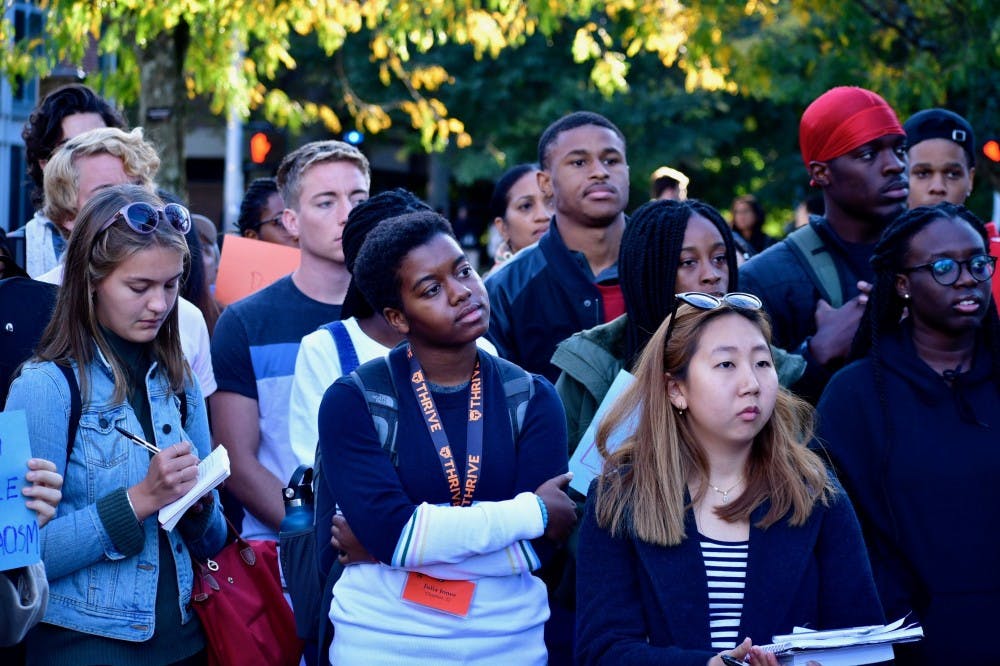
Students listen to alumni and student speakers at the protest against the installation.





